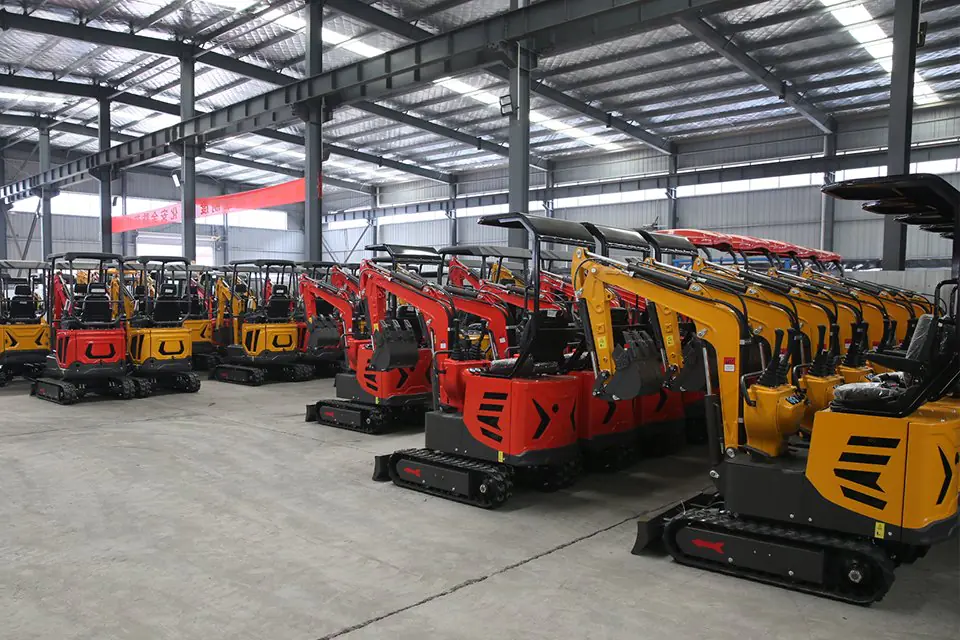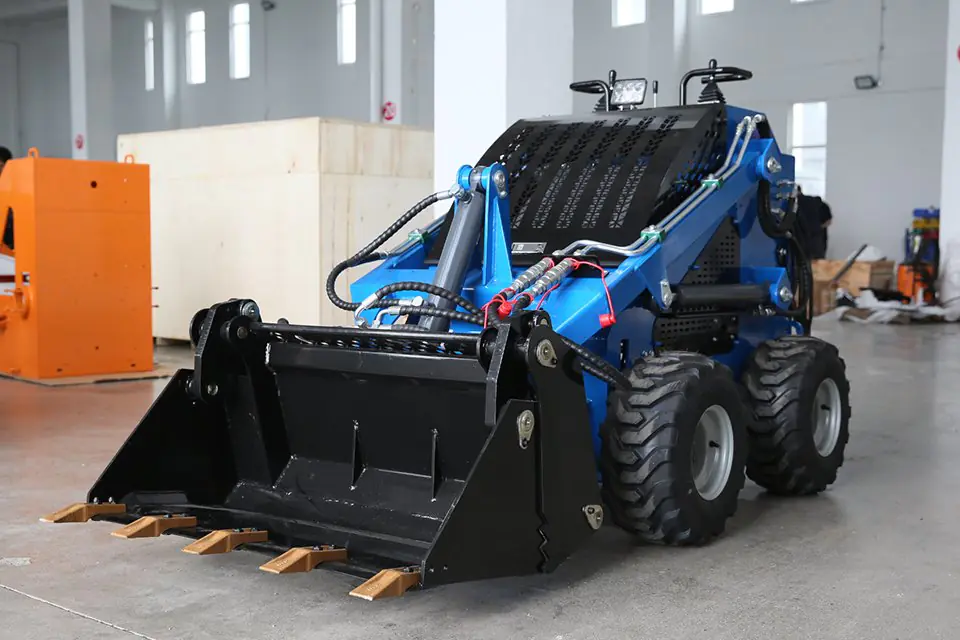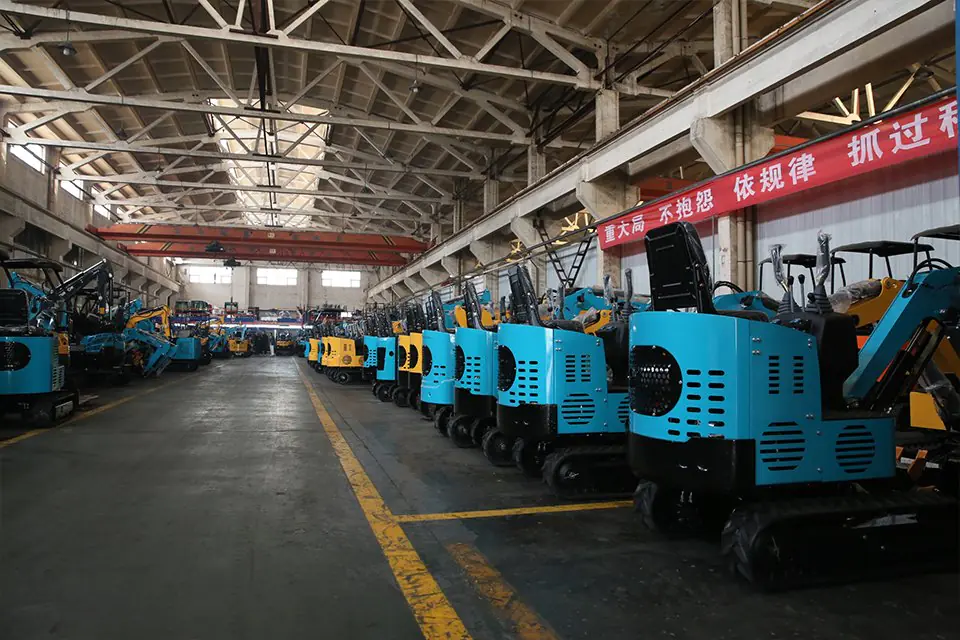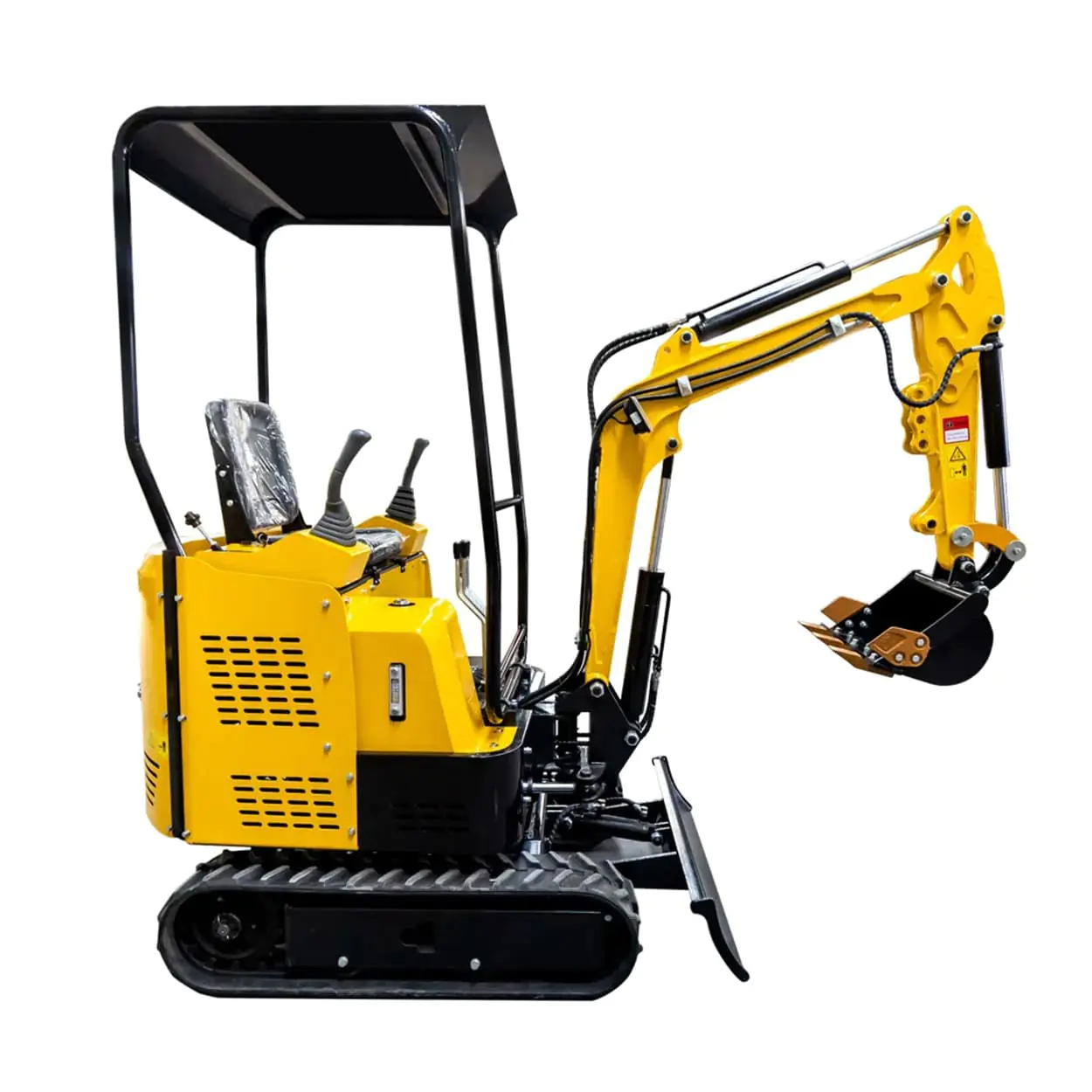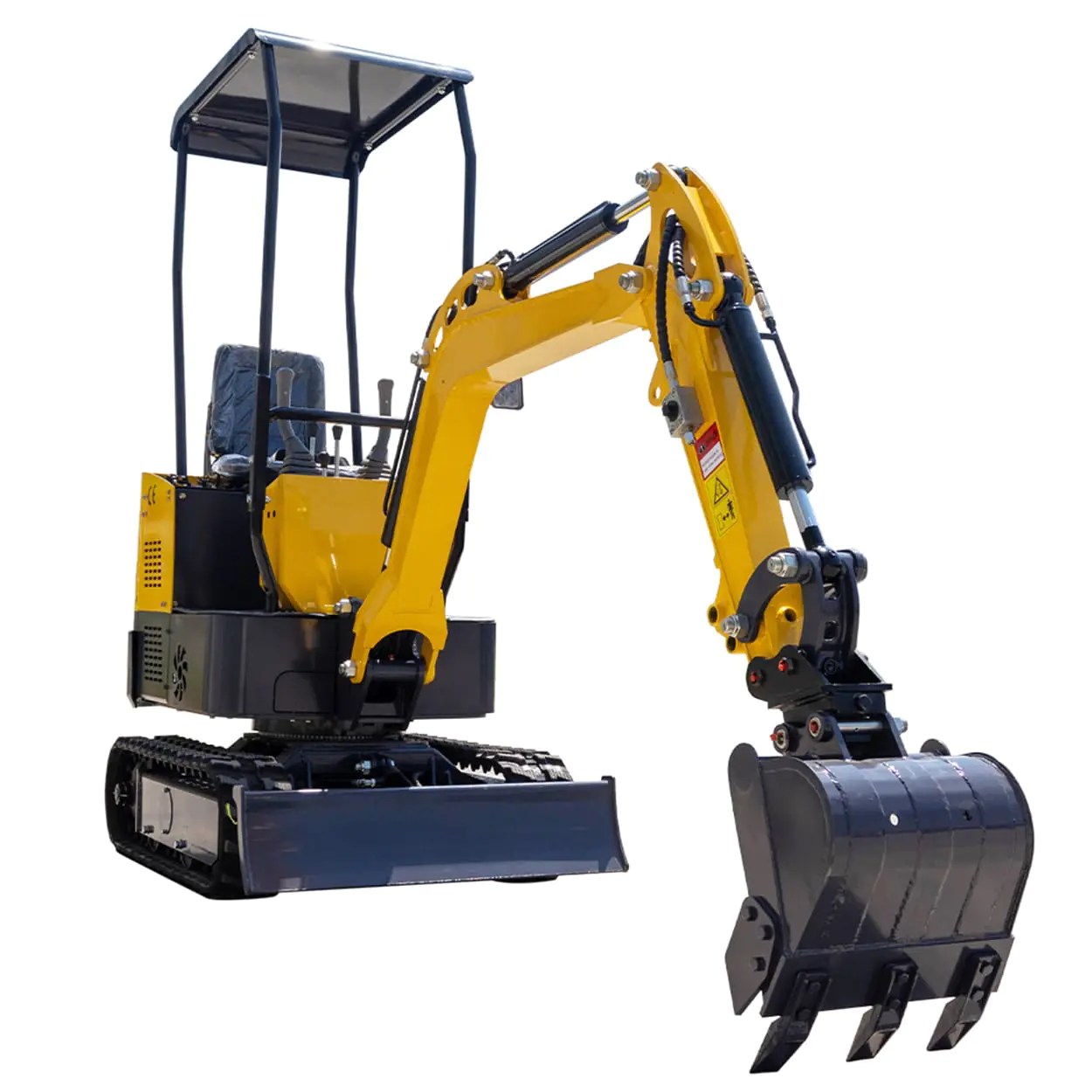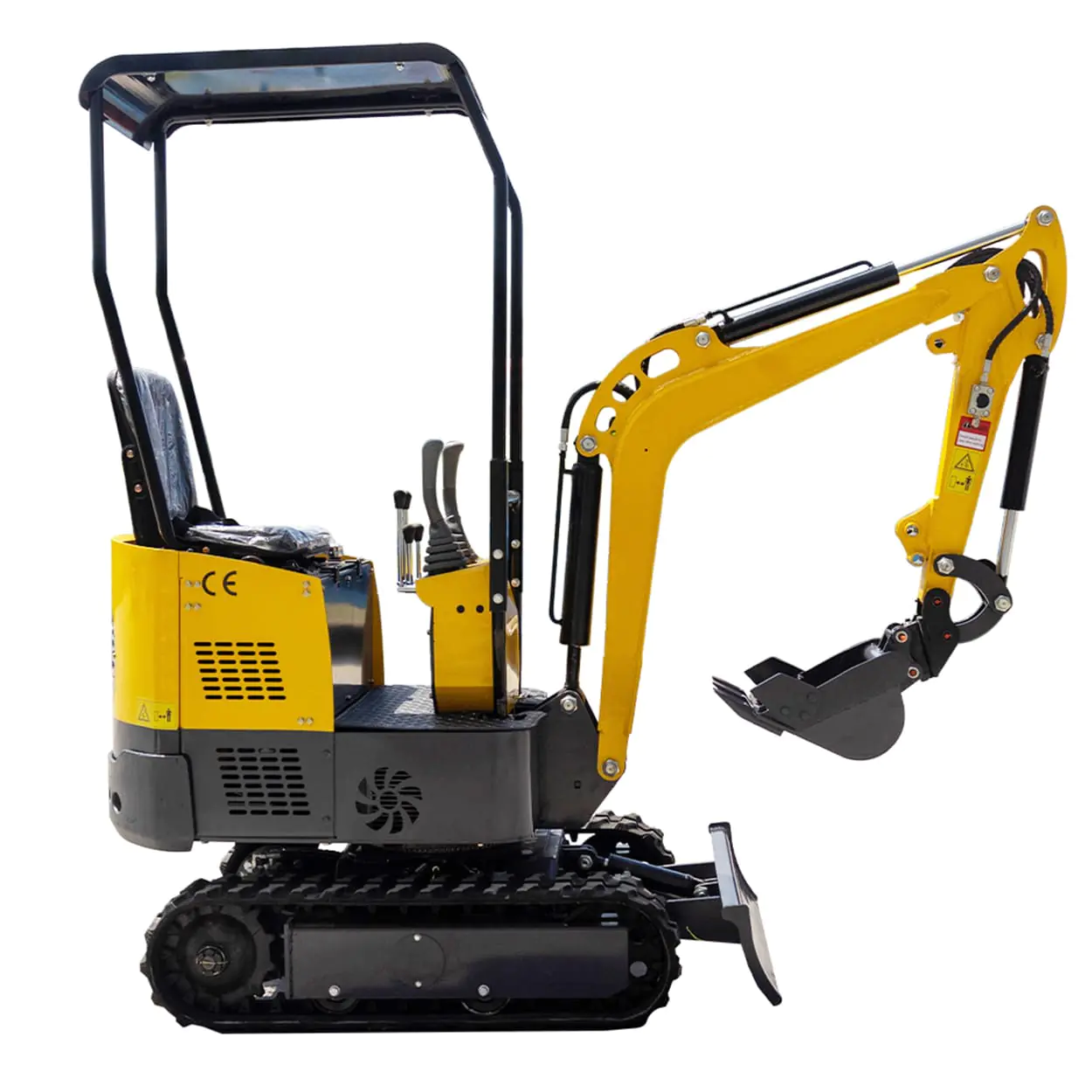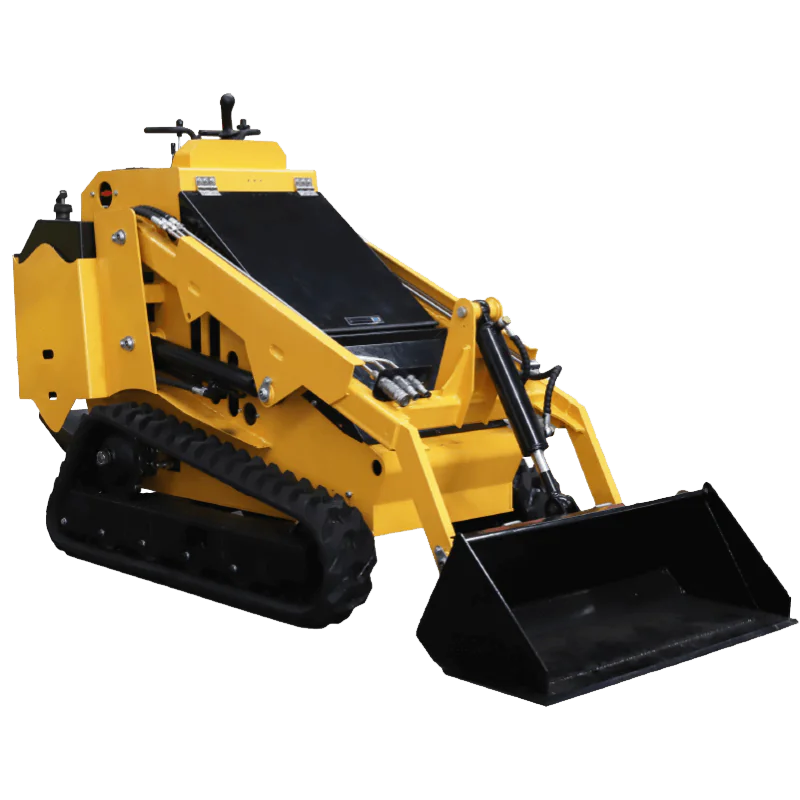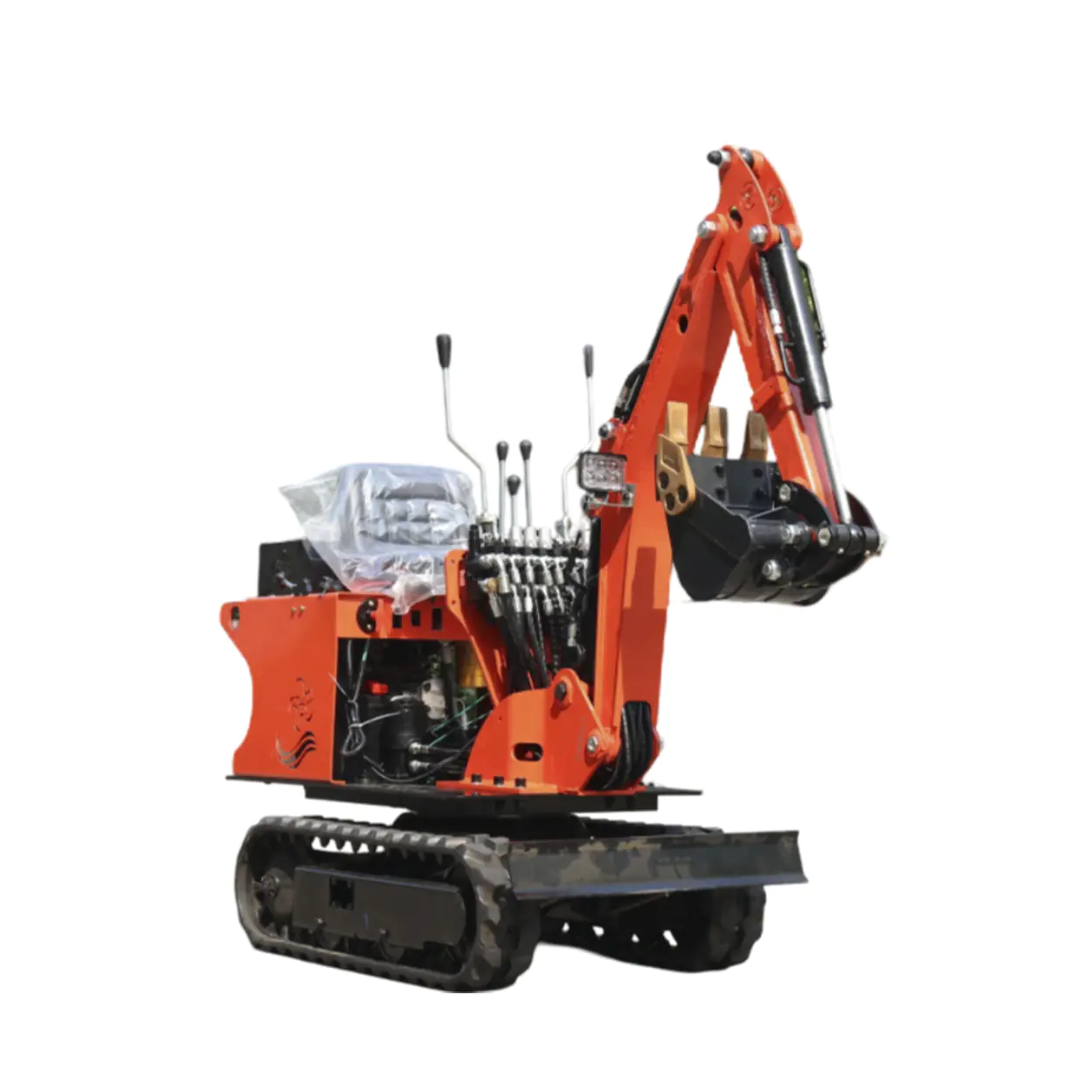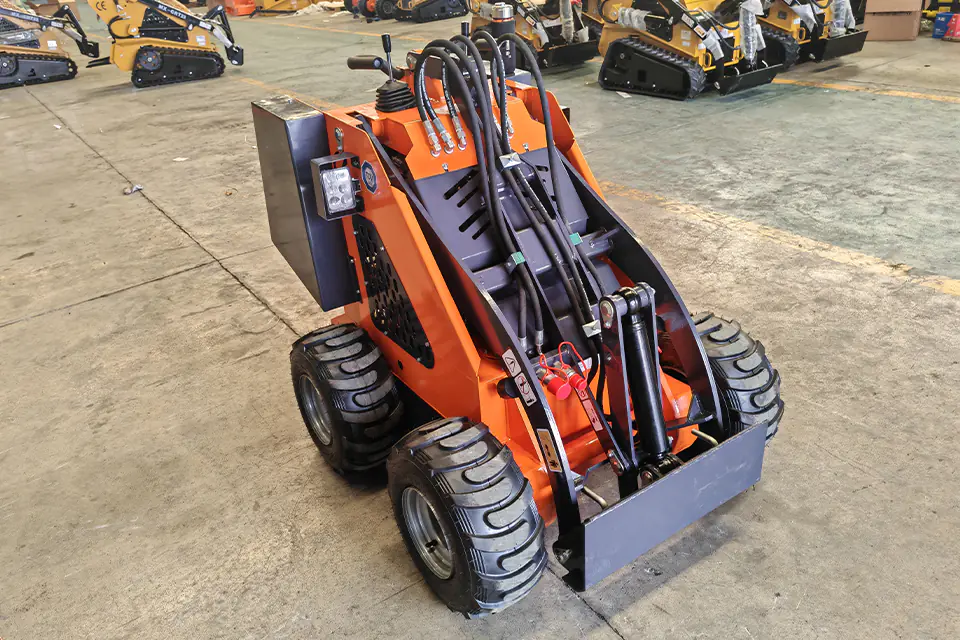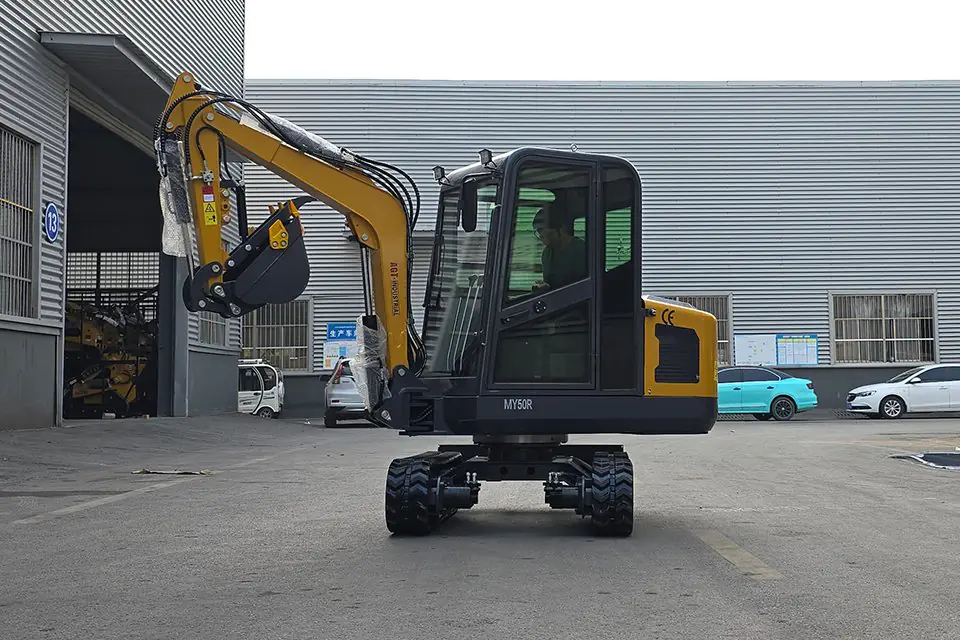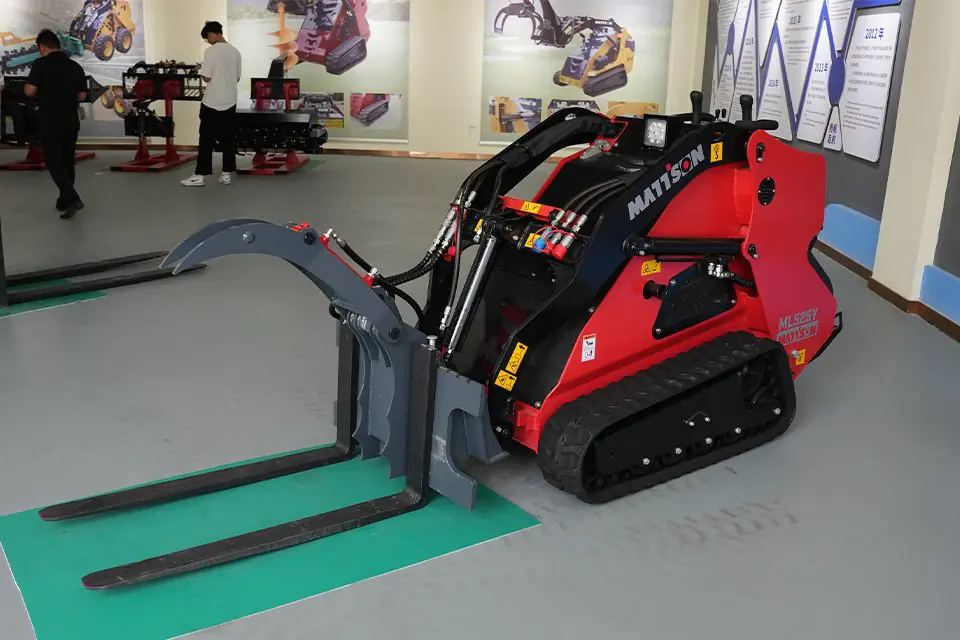Ever been working with your mini excavator and suddenly felt a little lopsided? Chances are, one of your tracks decided to take a little vacation. Don’t panic! While it might seem daunting, putting a track back on a mini isn’t as tough as you might think. This guide will walk you through the process, step by step, so you can get it back on and get back to work. Consider this your friendly guide to conquering a common excavator issue!
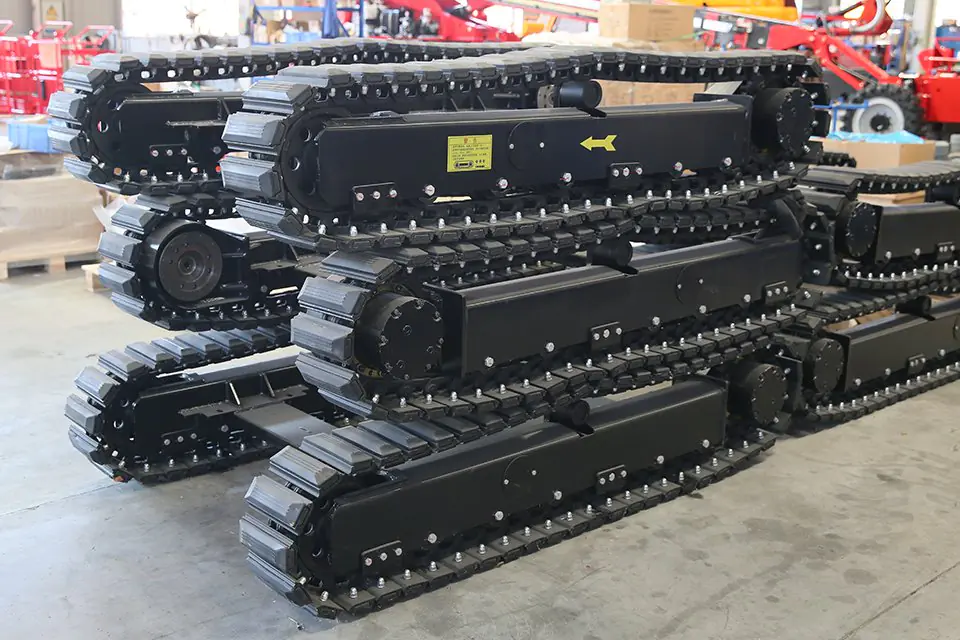
Why Did My Mini Excavator Track Come Off Anyway? Do Mini Excavators Lose Tracks Often?
Understanding why your mini excavator decided to shed a track can help you prevent it from happening again. So, why come off mini excavators? There are a few common culprits.
One frequent reason mini excavators lose tracks is simply that the track tension isn’t right. Think of it like a bicycle chain – too loose, and it might slip off the sprocket. Over time, the rubber track can stretch, causing it to become loose tracks. Regularly checking and adjusting the track tension is key to avoiding this.
Another reason your track may have given up the ghost is wear and tear. Just like tires on a car, excavator tracks wear down over time. Working in rocky or abrasive environments can speed up this process. Keep an eye out for damage like cuts, tears, or missing lugs on the side of the track. If your sprocket is worn or if the idler isn’t in good shape, these components can also contribute to tracks coming off.
Finally, sometimes it’s just bad luck or a momentary lapse in attention. Hitting an obstacle at an awkward angle or operating on very uneven terrain can sometimes cause a track fell situation.
What Tools Will I Need to Put the Track Back on My Mini Excavator?
Before you start trying to put a track back, gather your tools. You won’t need anything too specialized, but having the right equipment makes the job much easier and safer.
First, you’ll definitely need a grease gun. This is essential for adjusting the track tension. Make sure you have the correct type of grease for your excavator model. You might also need a wrench or socket set to loosen or tighten any bolts on the idler if your machine has that type of adjustment.
A sturdy pry bar will be your best friend for coaxing the track back into place. Gloves are a must to protect your hands from dirt and grease. Depending on the situation, you might also want a block of wood or a short 2×4 to use as leverage. And, of course, always prioritize safety! Make sure you have any necessary safety gear, like sturdy boots and eye protection. Having a need a second person to help can also make the process smoother and safer, especially for larger mini excavators.
Safety First! How to Prepare Your Mini Excavator Before Working on the Track
Before you even think about touching the track, safety is paramount. You’re dealing with heavy machinery, so taking precautions is crucial.
First and foremost, make sure the excavator is on a level, stable surface. Engage the parking brake and lower any attachments to the ground. Turn off the engine and remove the key. This prevents any accidental movement while you’re working.
If possible, use the boom and bucket to slightly raise the side of the excavator where the track comes off. This will give you more room to work and make it easier to maneuver the rubber track. Use sturdy blocking under the track frame for extra security. Never rely solely on the hydraulics to hold the machine up. Ensure the safety lever is engaged to prevent unintended operation of the controls.
Take a moment to inspect the area around the track. Are there any rocks or debris that could get in the way? Clear the area to give yourself plenty of space to work safely and efficiently.
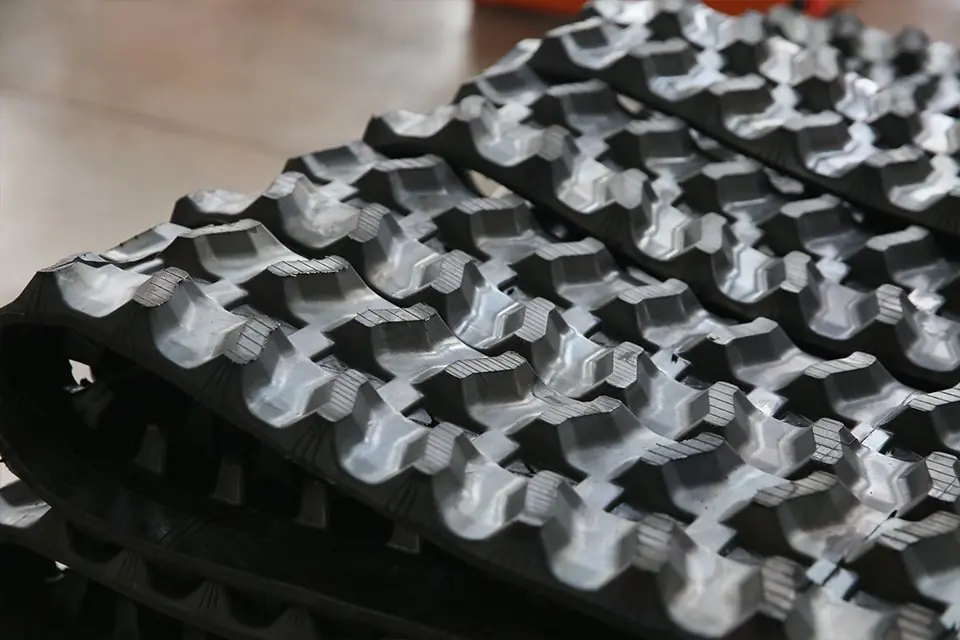
Loosening the Tension: Making Room to Put the Track Back
Now that your mini excavator is safely prepped, the next step is to loosen the track tension. This will give you the slack you need to wrestle the track back onto the rollers and sprocket.
Locate the grease fitting on the track adjuster cylinder. This is usually found near the front idler wheel. Using your grease gun, slowly release the grease. You might need to slightly loosen the valve or grease fitting first. As you release the grease, the front idler will move inward, creating slack in the track. The goal is to get the track almost completely slack so you can maneuver it easily. Sometimes, the grease should start to flow out on its own once you crack the fitting open. If it doesn’t, you might need to gently tap the cylinder with a hammer.
If your Kubota or John Deere has a different type of track tension adjustment, consult your operator’s manual for the proper procedure. Some models have a bolt or nut that needs to be loosened instead of a grease system.
Getting the Track Back On: A Step-by-Step Guide
With the tension released, you’re ready to get the track back where it belongs. This might take a bit of muscle and finesse.
Start by positioning the rubber track so that it’s roughly aligned with the undercarriage. The goal is to get the track on the sprocket first. This is usually the most challenging part. Use your pry bar to carefully lever the track onto the sprocket. Work your way around the sprocket, ensuring the lug on the inside of the track engages with the teeth.
Once the track is on the sprocket, you can start working it over the rollers. Again, your pry bar will be helpful here. Work from the center of the track outwards. You might need to rotate the track slightly as you go to get it to seat properly on all the rollers. Having a helper at this stage can be incredibly beneficial.
The final roller to get the track over is usually the front idler. With the tension still released, this should be manageable. Make sure the track is seated correctly on all the rollers and that there are no twists or kinks.
Tension Time: Tightening the Track for Optimal Performance
With the track back in place, it’s time to restore the proper track tension. This is crucial for the performance and longevity of your mini excavator‘s rubber track.
Using your grease gun, slowly pump the track adjuster cylinder with grease. As you add grease, the front idler will move outwards, tightening the track. Keep adding grease until the track has the correct amount of sag.
How do you know what the right sag is? Refer to your excavator‘s operator manual for the recommended track tension. A general rule of thumb is that you should be able to push the track up about 2-3 inches in the middle of the bottom run. Don’t overtighten the track, as this can put excessive stress on the components and lead to premature wear.
If you have a bolt-type adjuster, tighten the adjustment bolt according to the manufacturer’s specifications. Regularly check the tension of your tracks as part of your routine maintenance. Loose tracks can lead to them coming off again, while overtightened tracks can cause damage.
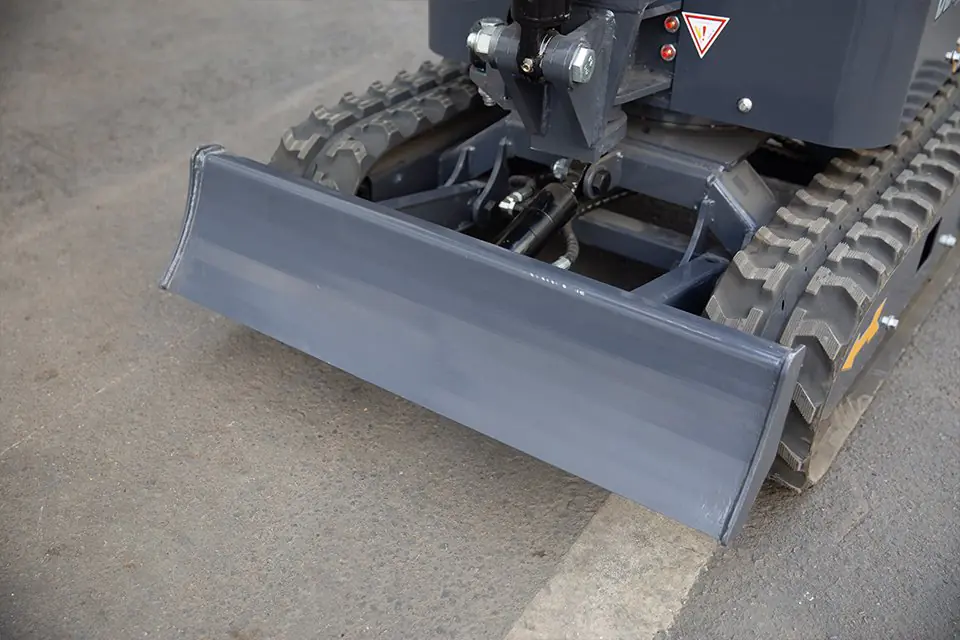
Troubleshooting: What to Do If the Track Still Won’t Go Back On
Sometimes, even with the best efforts, the track might be stubborn and refuse to cooperate. Don’t get discouraged! Here are a few troubleshooting tips.
Double-check that you’ve fully released the track tension. Sometimes, the valve can get clogged, preventing the grease from releasing properly. Try gently cleaning the grease fitting.
Inspect the track and undercarriage for any obstructions. A small rock or piece of debris lodged in the wrong place can prevent the track from seating correctly.
Make sure the idler and rollers are rotating freely. If they are seized or damaged, it will be much harder to install the track.
If you’re still struggling, don’t hesitate to call a professional mechanic. Forcing things can lead to damage. It’s better to seek expert help than to risk costly repairs.
Preventing Future Track Issues: Keeping Your Mini Excavator on Track
Prevention is always better than cure. Taking proactive steps can significantly reduce the chances of your mini excavator throwing a track.
Regularly inspect your rubber track for any signs of wear and tear, such as cuts, cracks, or missing lugs. Pay attention to the idler and rollers, making sure they are in good condition and rotating smoothly. Keep the undercarriage clean of debris.
Most importantly, regularly check the tension of your tracks. This is a quick and easy maintenance task that can save you a lot of headaches. Adjust the tension as needed according to your excavator‘s manual. Operating in harsh environments can also tension and cause the tracks to lose tension more quickly or pop off more frequently.
Consider the conditions you’re working in. Avoid operating on extremely uneven terrain or making sharp turns at high speeds, as this can put extra stress on the tracks. If you notice your tracks more or less often than usual, it’s a sign something might be amiss.
When is it Time for a New Track? Recognizing Wear and Tear
Even with the best maintenance, rubber tracks eventually wear out. Knowing when it’s time for a replacement can prevent unexpected breakdowns and ensure optimal performance.
Keep an eye out for obvious signs of damage, like deep cuts, exposed cords, or missing chunks of rubber. If you may find stress marks or see signs of rotting rubber, it’s a strong indicator that the track is nearing the end of its lifespan.
Pay attention to the lugs. If they are significantly worn down or missing, you’ll lose traction. Also, check the internal cables of the track. If they are visible or frayed, replacement is necessary.
If you find yourself frequently adjusting the track tension or experiencing tracks coming off repeatedly, even after adjustments, it might be a sign that the track is stretched beyond its limits and needs replacing. Ignoring these signs can lead to more significant problems down the road.
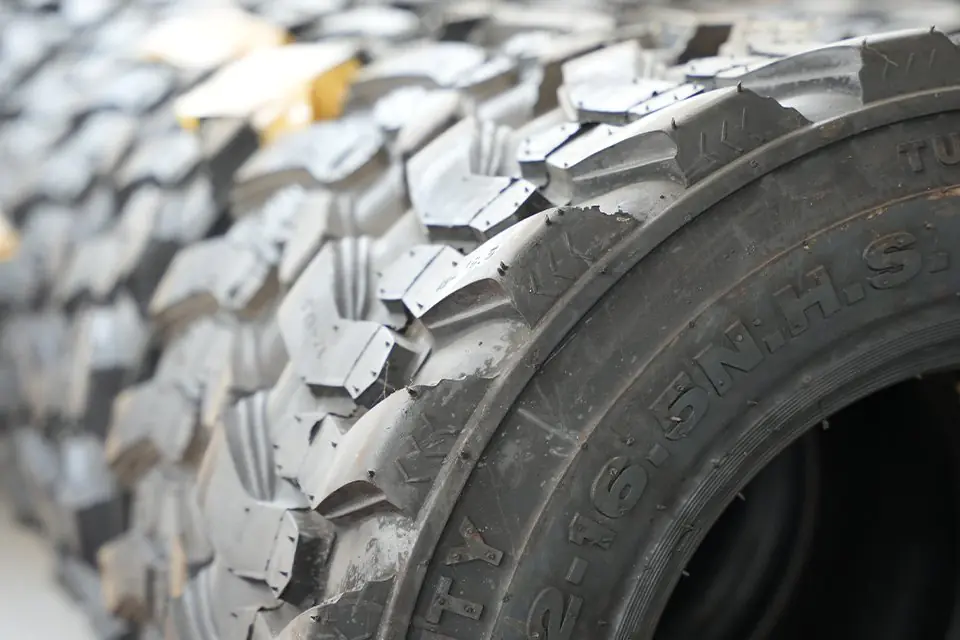
Conclusion: Getting Back to Work with Confidence
While having a track fell off your mini excavator can be frustrating, understanding the process of putting it back on can save you time and money. By following these steps and prioritizing safety, you can confidently tackle this common issue. Remember to regularly maintain your machine’s tracks to prevent future problems. Now you can learn how to put that track back on a mini and get back to digging!
- Safety First: Always prioritize safety by ensuring the machine is stable and the engine is off.
- Loosen the Tension: Releasing the tension is crucial for getting the track back on.
- Use the Right Tools: A grease gun and pry bar are essential.
- Check Tension Regularly: Proper tension prevents future issues.
- Know When to Replace: Don’t wait until the track completely fails.
content_copydownload Use code with caution.Html
For more information on maintaining your mini excavator, check out our article on essential daily checks for your excavator. Also, don’t miss our guide to understanding different types of excavator attachments to maximize your machine’s versatility. And if you’re considering an upgrade, our article on choosing the right size mini excavator for your project can help. You can also learn more about common skid steer maintenance tips as some principles are similar.
Let’s dig a little deeper into the world of mini excavator tracks and explore some related scenarios and finer points that can make the process even smoother and help you become a true track-reinstalling pro!
Dealing with Stubborn Tracks: Tricks of the Trade for Extra Difficult Situations
Sometimes, despite your best efforts, a track just doesn’t want to cooperate. Maybe it’s especially tight, or perhaps it’s been off for a while and is a bit stiff. Don’t throw in the towel just yet! There are a few extra tricks you can try.
If you’re finding it hard to maneuver the track, try using a little bit of soapy water or a rubber lubricant on the rollers and the inside of the track. This can help it slide into place more easily. Be careful not to use too much, and avoid petroleum-based lubricants as they can damage the rubber track over time.
Another technique involves using the excavator‘s own power to assist. With the majority of the track already on, and with extreme caution, you can gently use the bucket or the blade (if equipped) to nudge the remaining section of the track onto the rollers or sprocket. Important safety note: This should only be done with extreme care, ensuring no body parts are in the path of movement and that the machine is stable. It’s often best to have a spotter guiding you during this process. The goal isn’t to force it, but to provide a little extra encouragement.
In particularly stubborn cases, especially with larger mini excavators, a come-along winch or a ratchet strap can be invaluable. Securely attach one end to the track and the other to a stable point on the excavator frame, and use the winch or strap to gently pull the track into position. Again, proceed slowly and cautiously, checking the alignment frequently.
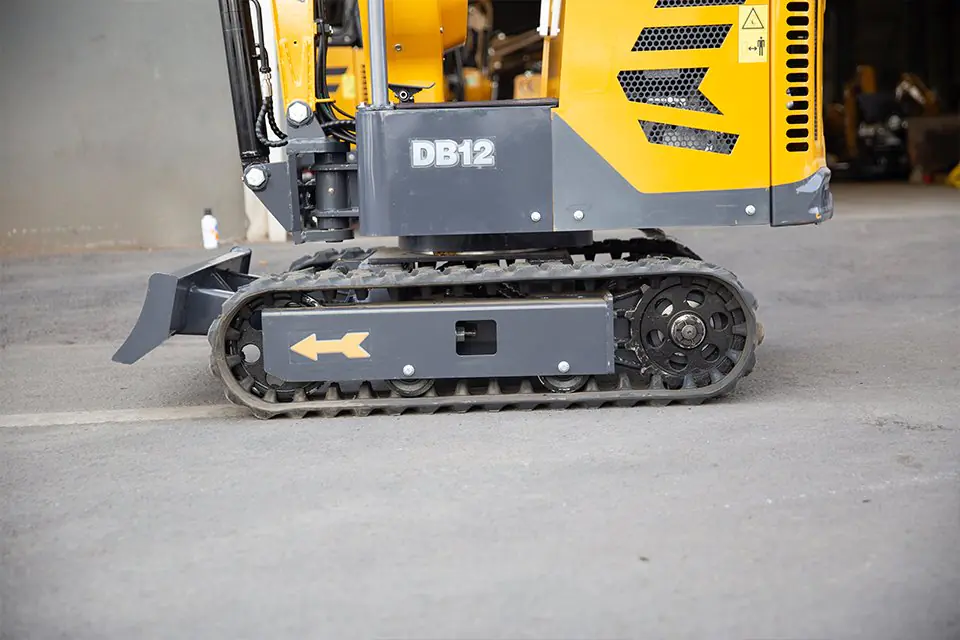
The Importance of Proper Track Tension: Beyond Just Keeping the Track On
We’ve touched on track tension, but it’s a topic worth revisiting, as it’s absolutely crucial for the overall health and performance of your mini excavator. Proper tension isn’t just about preventing the track from falling off; it significantly impacts several other factors.
Correct track tension ensures optimal traction and reduces slippage, especially when working on slopes or in challenging conditions. A loose track will spin more easily, decreasing your efficiency and potentially damaging the undercarriage components.
Conversely, an overtightened track can lead to premature wear and tear on the rubber track itself, as well as the rollers, idler, and sprocket. This increased friction generates heat and stress, shortening the lifespan of these expensive parts. You might also notice increased fuel consumption with overtightened tracks.
Think of the track as a system. Proper track tension keeps all the components working together harmoniously. It’s a simple adjustment that can save you significant money and downtime in the long run. Make it a habit to check the tension regularly, especially before tackling demanding jobs. Remember to consult your excavator model‘s manual for the specific recommended sag or tension measurement.
Understanding Different Types of Mini Excavator Tracks: Rubber vs. Steel
While most mini excavators utilize rubber tracks, some applications or operators might opt for steel track options. Understanding the differences between the two can help you make informed decisions about maintenance and potential issues.
Rubber tracks offer several advantages, including less ground disturbance, quieter operation, and smoother ride, particularly on paved surfaces. They are generally the preferred choice for landscaping, utility work, and jobs where minimizing surface damage is crucial. However, rubber tracks are more susceptible to cuts and punctures from sharp objects.
Steel tracks, on the other hand, provide superior traction and durability in harsh environments, such as demolition sites or rocky terrain. They are less prone to damage from sharp debris. However, steel tracks can cause significant ground damage, are noisier, and provide a less comfortable ride.
The process of putting a track back on is generally similar for both rubber track and steel track systems. However, steel tracks can be significantly heavier and more challenging to handle, often requiring more than one person or specialized lifting equipment. Maintenance requirements also differ, with steel tracks often requiring lubrication of the individual links.
Common Mistakes to Avoid When Reinstalling Mini Excavator Tracks
Even experienced operators can sometimes make mistakes when trying to fix a thrown track. Being aware of these common pitfalls can help you avoid frustration and potential damage.
One frequent error is not fully releasing the track tension before attempting to put the track back. Trying to force a tight track onto the sprocket or rollers is a recipe for struggle and potential damage to the track itself or the undercarriage components.
Another mistake is using excessive force. While a pry bar is helpful, forcing the track with excessive leverage can damage the lug or even the track‘s internal structure. Patience and methodical maneuvering are key.
Failing to properly align the track before attempting to reinstall it is another common issue. Make sure the track is oriented correctly with the lugs facing inward and aligned with the sprocket teeth. Trying to force a misaligned track will likely lead to frustration.
Finally, neglecting to properly retension the track after installation is a critical oversight. As mentioned earlier, incorrect track tension can lead to a host of problems. Always refer to your manual for the proper tension specifications.
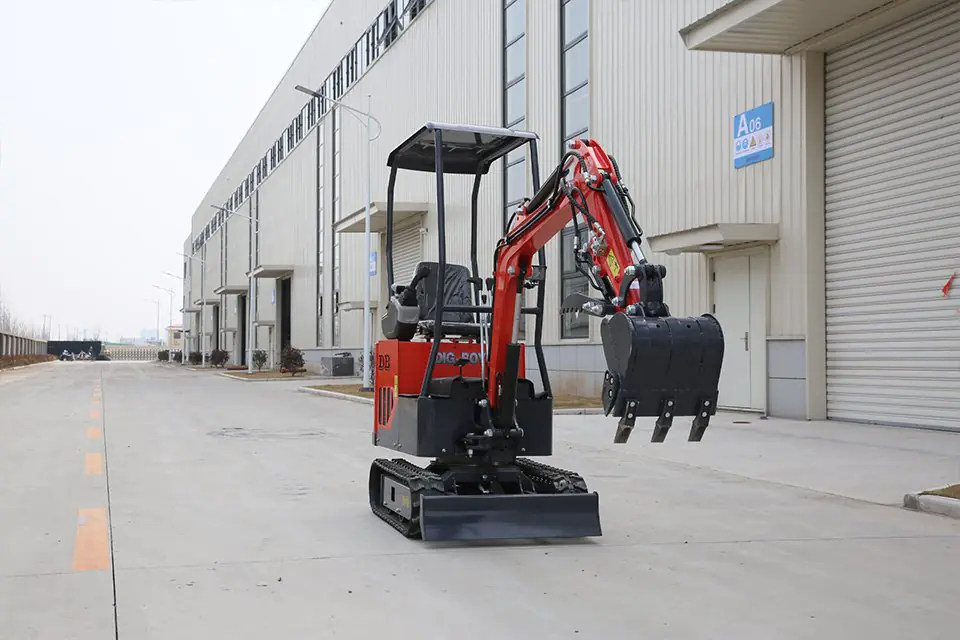
The Role of Regular Undercarriage Maintenance in Preventing Track Issues
While knowing how to put a track back on is a valuable skill, preventing the issue in the first place is always the best approach. Regular undercarriage maintenance is crucial for minimizing the chances of a thrown track.
This includes regularly inspecting and cleaning the undercarriage. Remove any accumulated mud, rocks, or debris, as this can contribute to wear and tear on the tracks and other components. Check the rollers and idler for proper lubrication and free rotation. Ensure the sprocket teeth are not excessively worn or damaged.
As highlighted before, consistently monitoring and adjusting track tension is paramount. Make it part of your routine pre-operation checks. Pay attention to any unusual noises or vibrations coming from the undercarriage, as these could be early warning signs of potential problems.
Following the manufacturer’s recommended maintenance schedule for your excavator model is also essential. This will outline specific maintenance tasks and intervals for the undercarriage and other critical systems.
By adopting a proactive approach to undercarriage maintenance, you can significantly extend the lifespan of your tracks and minimize the likelihood of experiencing a thrown track in the middle of a job. This not only saves you downtime and repair costs but also contributes to safer and more efficient operation of your heavy equipment.
When to Call a Professional: Knowing Your Limits
While this guide provides the knowledge to tackle a thrown track, it’s important to recognize when the situation might be beyond your capabilities or comfort level. There’s no shame in calling for professional help when needed.
If you’ve tried the steps outlined and the track simply won’t go back on, or if you suspect underlying mechanical issues with the undercarriage components, it’s wise to consult a qualified mechanic. Attempting to force a repair when you’re unsure can lead to further damage and potentially higher repair costs.
Similarly, if you’re dealing with a large excavator or a particularly stubborn steel track, the weight and complexity might necessitate professional intervention. Safety should always be your top priority, and attempting a repair beyond your physical capabilities can be dangerous.
If you notice significant damage to the track itself, such as large tears or exposed cords, it’s likely time for a replacement rather than a simple reinstallation. A professional can assess the damage and recommend the appropriate course of action.
Ultimately, knowing your limitations and seeking expert assistance when needed can save you time, money, and potential injury. A good understanding of the process empowers you to make informed decisions about when to handle the situation yourself and when to call in the pros.
Conclusion: Mastering the Art of Mini Excavator Track Reinstallation
Getting a track back on a mini might initially seem like a daunting task, but with the right knowledge, tools, and a bit of patience, it’s a manageable challenge. Understanding the reasons why mini excavators lose tracks, practicing proper safety procedures, and mastering the techniques for reinstalling and tensioning the tracks will empower you to handle this common issue confidently. Remember that regular maintenance and proactive care are key to preventing future occurrences. By following the advice and tips outlined in this comprehensive guide, you’ll not only be able to get your track back on quickly but also contribute to the longevity and optimal performance of your valuable mini excavator. Now go forth and conquer those tracks!
- Lubrication Can Help: Soapy water or rubber lubricant can ease stubborn tracks.
- Proper Tension is Key: It affects traction, wear, and fuel efficiency.
- Rubber vs. Steel: Understand the differences for maintenance.
- Avoid Force: Patience and proper alignment are crucial.
- Regular Maintenance Prevents Issues: Keep your undercarriage clean and well-maintained.
- Know Your Limits: Don’t hesitate to call a professional when needed.
To further enhance your knowledge, explore our article on troubleshooting common mini excavator hydraulic issues. You might also find our guide to safely operating a mini excavator on slopes helpful for preventing track-related incidents. And for those considering expanding their fleet, our comparison of different mini excavator brands and models offers valuable insights. Remember, a well-maintained machine is a productive machine!
